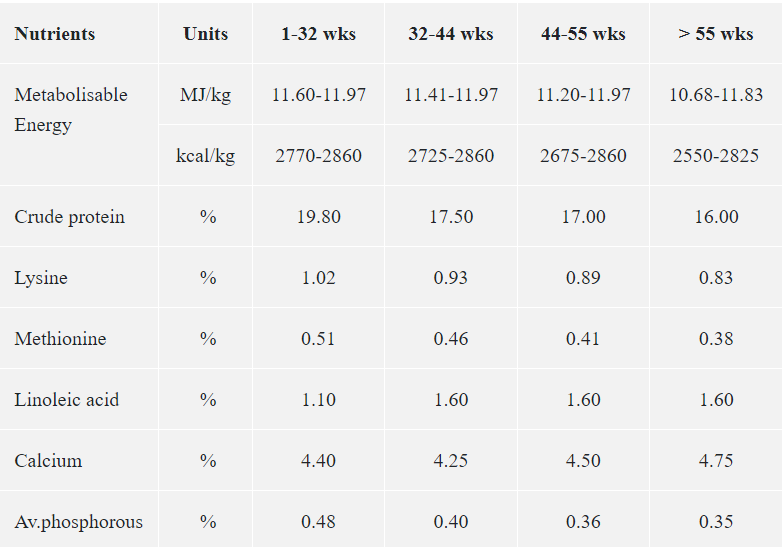
Formulating a Layer feed.
Commercial Laying birds are physiologically and genetically adapted to laying 1 table egg at least every 24hours. These birds require unique nutrients in their diet to cater for the huge burden of meeting up the physiological demands of laying eggs, these nutritional requirements needs to be satisfied to achieve optimal production in terms of egg number and egg sizes, with strong consideration of the well-being of the birds.
An ideal nutrient requirement varies for breed, age, and sometimes the prevailing atmospheric conditions. The requirement will reflect the demand on the birds for production and also maintenance of the health of the birds. Birds at their peak laying stage will typically demand more protein and energy, as they age this requirement will naturally decline to avert metabolic diseases. An example of nutrient requirement for laying birds at different stages can be seen as outlined in the table below.

Commercially, when formulating an ideal layer feed, strong consideration must be given to two types requirements that the birds need to achieve optimal and their inert capacity, these can be referred to as the Maintenance requirement and Production requirements. Understanding these two basic concepts will guide you in formulating rich layer feed.

Maintenance and Production requirements
Laying birds like any other livestock require maintenance nutrients in quality and quantity. This requirement is just in the right amount to cater for the birds well-being, i.e. for normal physiological conditions, metabolism and synthesis of required antibodies to fight diseases. Literarily, the nutrient content and feed intake for maintenance ration in laying birds varies according to the ages of the birds. However, in my practical experience, the nutritional requirement in relation to protein and Metabolizable Energy to target when formulating for layers to properly maintain the health for optimal physiological conditions should not be less than 16% and 2500Kcal/kg respectively. Marginal increase in these figures will improve the production capacity of the birds as they transition from different laying stages as seen in the table presented above.
Combining feed ingredients to arrive at these target figures will require systematic calculations of the nutritional components of the various available feed stuffs noting their peculiarities, The ingredients can be combined in acceptable and tolerable ratios based on professional knowledge of the various ingredients that are available, this can be likened to an “art of combining colours on a canvas”. This art will be further elaborated on in subsequent article.